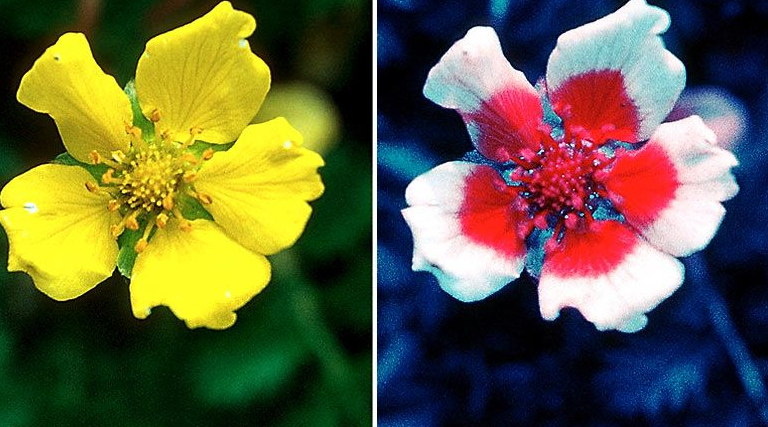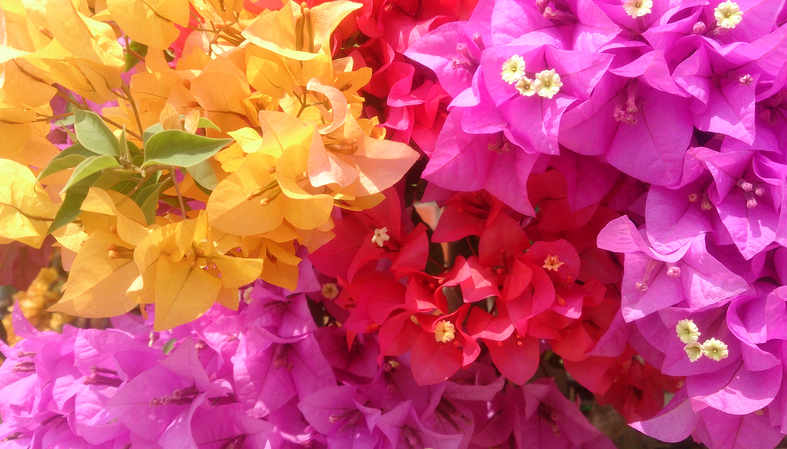
Hydrangeas, often associated with the southern United States, can be found throughout the world. They’re known for their nodding and heavy clusters of flowers, and are hardy in most climates. You can plant these vibrant flowers for a colorful bouquet, or simply enjoy their colorful beauty from afar.
The dahlia is one of the lushest and most vibrant flowers you’ll find in the sunny, mid-latitude garden, available in a rainbow of colors ranging from pink and red to orange or white. Some dahlia petals even have stunning color gradients, like bright reds that gradually fade into soft whites or gorgeous purples that lighten from stem to tip. Now you can enjoy a wealth of dahlia varieties in your own fields.

Blue carnations
Blue carnations are one of the most popular types of flowers. They are an incredibly hardy and durable flower, which makes them an ideal choice for bouquets, corsages, and wedding centerpieces. They also work well in large arrangements, because their color is consistent and they’re easy to manipulate.
They don’t grow naturally anywhere, but they’re now cultivated for commercial purposes. They have a stunning bloom that makes a dramatic statement. They’re usually white, but their blue hue comes from dying them with a food color. It was common for florists in the 1970s to dip white carnations in colored water to make them blue. This process involved dipping the flowers in water that contained the food color, which would eventually end up in the petals of the blue flower.
Carnations do not have the blue color naturally, and traditional breeding methods limit the range of colors that can be produced. Fortunately, however, there are now several breeds of carnations that have blue coloring. Blue carnations, for example, were created thanks to a decade of research by Australian scientists. These varieties are marketed in the U.S. by Floragene.
Although the history of the blue carnation is relatively short, it’s worth noting its significance. They’re an extremely colorful flower, and can be a great addition to party decorations. They also radiate elegance and joy. They’re also popular as gift flowers, especially during weddings. Their light blue hue has symbolic value and is often used at weddings to represent love, peace, and truth.
Blue hydrangea
While blue is not a common color in flowering plants, the cool blue tones of the blue hydrangea are calming and go well with other colors. They also tie the landscape together with the sky. Although some species have a limited blue blooming cycle, this color is still present in many varieties.
The soil in which hydrangeas grow is also a factor in color. An alkaline soil has a pH level of seven to nine, while an acidic soil has a pH of 6.0- 7.0. To determine the pH level of your soil, you can visit a soil lab or purchase a pH meter.
The ‘Nantucket Blue’ hydrangea is a good choice for zone 5 gardens. This hardy hydrangea thrives in full sun or partial shade. It grows four to six feet tall and is frost-tolerant. It is best suited for containers.
Although hydrangeas are easy to grow and require little maintenance, they may not respond well to certain soil conditions. If the pH of the soil is too acidic, they may not bloom. In such a case, you can use a soil acidifier to lower the pH of your soil. This will help them adjust to the new pH level and make their blooms appear in different colors.
Hydrangeas can produce many different colors, depending on their genetics. Genetics controls the amount of delphinidin-3-glucoside in the sepals. The content varies from zero in the white cultivars to 700 micrograms per gram of fresh sepal in the most colorful breeds. The amount of this pigment in a sepal determines the intensity of color, from pale to vivid.
Purple orchid
Purple orchids are a popular choice for a garden. These flowers have bright hues, making them a good choice for brighter gardens. These plants like bright light and thrive in sunny conditions. However, they also need plenty of water and proper drainage. These plants have a wide range of colors and are usually easy to grow.
The color of an orchid is bright and can range from pinkish purple to gray to a strong reddish purple. The Pantone Color Institute, which develops color systems for a variety of industries, selected purple as the color of the year in 2014. This choice was based on its wide appeal and was chosen to encourage creativity and originality. The color purple has always been prominent in the orchid world and has many meanings.
The color of an orchid depends on several factors. The color of an orchid is not derived from pigments in its cells, but instead is produced by two cell layers: the outer layer is a waxy layer called the cuticle and the inner layer is a group of cells called the epidermis. The epidermis produces pigment-containing organelles called chloroplasts. Light hitting the chloroplasts creates the dark purplish color.
Purple orchids are associated with royalty and power. The color is also associated with a sense of feminine grace and elegance. They are a lovely addition to any room. They also go well with accent colors such as apple turquoise.

Blue Tango
The ‘Blue Tango’ bromeliad has a unique look and is often used as a container plant. It is an unreleased hybrid of fendleri and aechmea with an upright, mostly blue inflorescence. It is a very easy plant to care for.
Its hot pink flowers are surrounded by brilliant blue bracts. This bromeliad grows indoors or in warmer climates and does best in indirect light. It is a fairly tall plant, growing from 24 to 36 inches tall. It does not set seed, so you can enjoy it year-round.
The ‘Blue Tango’ bromeliad flower has an electric blue inflorescence that shoots up from the center of the plant. The flower stalk is high, with pink branches topped by tiny blue bracts. These flowers will remain on the plant for five months. Its leaves are serrated and arch over, creating a fountain shape. The ‘Blue Tango’ bromeliad is also called an ‘urn’ or vase plant. The curved leaves are home to microorganisms and aquatic insects.
Snow crocus
Snow Crocus have a brilliant white color. They are hardy and bloom early in the spring. They are also quite showy in mass plantings. The petals are silvery in the early morning light, giving them a luminous effect. The snow crocus is also resistant to squirrels.
You can plant crocus bulbs in your garden in early autumn. They should be planted two inches deep. Be sure not to overlap them and make sure their pointy ends are facing upwards. Then cover the soil with about an inch of potting soil and water them often. Once the crocus blooms, you can cover them with mulch. However, heavy mulch should be removed by late February. A light mulch or a light layer of leaves can be used for late-season protection from frost.
Another variety of crocus is the saffron crocus. This plant produces saffron, which is extracted from the stigmas of the flowers. A pound of saffron is produced from 70,000 of these flowers. If you’re looking for a gift for a foodie, a crocus Sativus might be a great choice.
Crocuses are easy to grow and will bloom in full or partial sun conditions. They grow best in well-drained soil and are best planted six to eight weeks before the first hard frost. They should be planted three to four inches deep and placed in a sunny location. If you’re planting more than one crocus, be sure to space them 2-4 inches apart.
Gladiolus
Gladioli are a type of perennial flower that originates in Africa and the Mediterranean, but it became popular in Europe and the U.S. during the 1700s as trade routes became more extensive. They are often used as cut flowers and the seeds can be used as a natural medicine for colic. The flower is also very beautiful and comes in an incredible array of colors. The most popular color in gladiolus is red, but you can find other colors as well.
The gladiolus flower is easy to grow, and it is extremely popular throughout the world. It is also very beautiful, as it blossoms in every major color. It is said to pierce the heart with love, and it also signifies calm, faithfulness, and infatuation. In addition to these meanings, gladiolus is known to carry different meanings, depending on the accents. For example, red gladiolus is said to symbolize love, while pink gladiolus is said to symbolize compassion and love.
The best way to care for gladiolus is to regularly water it. They need more water than other plants, so they should be kept watered on a daily basis. Gladiolus tend to dry out more easily in containers, so it is essential to make sure you water them at the appropriate time. In addition to watering gladiolus daily, you should also use mulch to keep the soil moist and suppress weeds.
The dahlia is far and away the undisputed winner when it comes to sheer variety of colors. No other flower can boast such a wide spectrum of hues, and none can spread so wide either. If you want a flower that’s able to display intricate color gradients, the dahlia is the one for you.

